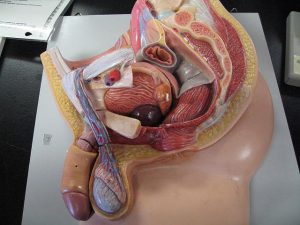Many cases of male infertility are due to varicocele, but many people do not really know what varicocele is, or do not even know that this problem can exist until they try for a pregnancy and are unable. Varicocele is relatively easy to diagnose and depending on the case, just good treatment can help. However, diagnosis of varicocele may take a long time if the investigation is focused only on the woman during attempts to conceive.
So what is varicocele? Varicocele is nothing more than a dilation of the veins in the testicles1. The dilation precisely affects the most important veins, those that support the testicle in the scrotal sac and that provide the most blood circulation to the area, causing swelling. Varicocele prevents blood and oxygen from reaching the scrotal sac, thus increasing the local temperature and reducing sperm production in most cases. That is why it is a condition that needs treatment for the couple to be able to achieve pregnancy. So we can say that varicocele is indeed an inflammation that causes infertility2. The causes of varicocele are varied: standing for long hours, or even a severe blow to the region can cause this problem. Some men develop varicocele from overdoing exercises during adolescence. The appearance of varicocele occurs between the ages of 15 and 30 and develops slowly. The appearance of a testicle with varicocele is different. Depending on the degree, the testicle can become swollen and the veins can be visible, thicker. The sensation that it is heavier is also common.
What is Varicocele? How to Diagnose
Diagnosing varicocele can be simple. An appointment with a specialist (urologist) can reveal the problem, but the degree of the condition is identified through ultrasound exams. A simple physical examination of the testicles or even a semen analysis can lead to the diagnosis that it is really a varicocele. The treatment3 for varicocele in more severe cases is surgery for correction, but doctors opt to perform the procedure only in cases where infertility is significant and medication or supplements may not be enough for recovery to obtain healthy sperm for a future pregnancy. The degrees of varicocele are 3:
- Varicocele grade 1> minor and only detected by palpation with coughing or effort, such as blowing for example.
- Varicocele grade 2> Easily detected by palpation without effort.
- Varicocele grade 3> Visible, veins are prominent and just by looking, you can see the difference.
After surgery, the time for full recovery is between 6 months and 1 year, and it can be said that the vast majority of treated cases recover very well. Remember that varicocele is not an “aggressive” disease and treatment is only necessary if there are signs of infertility. In most cases, it is possible to live normally unless there is pain. The appearance of varicocele is slow, as mentioned. If it happens suddenly, it should be investigated quickly. Cases where it develops too fast are related to tumors in the same veins that support the testicles. Keep an eye out and always seek medical attention!
Blogger’s note: My husband has varicocele and even without any surgery we managed to conceive naturally four times. The treatment he used was simple: he took tribulus terrestris, vitamin E and also an antioxidant. Vitamins were also prescribed; at the time he used Centrum. The doctor also prescribed anti-inflammatories: he used ketoprofen for 10 days when he had pain. So, if this is your partner’s case, it is worth consulting a specialist for further help—there will certainly be a solution.
See also: Male Infertility and Semen Analysis – What are the Main Problems













